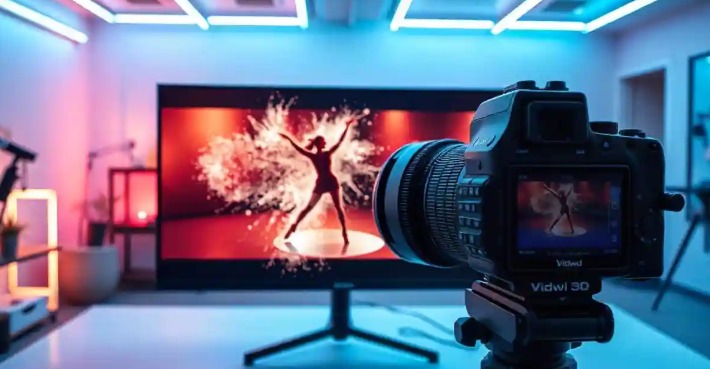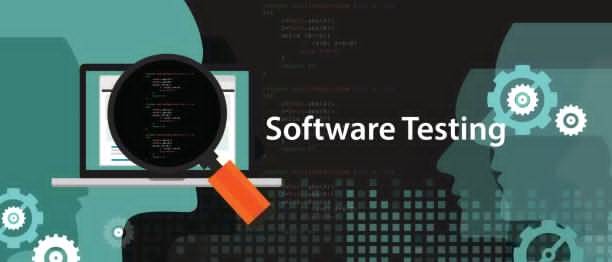Industry 4.0 marks the advent of smart manufacturing, wherein recently introduced technologies like IoT, AI, Big Data, and Robotics come into play. Among these technologies, the newest-age VR and AR have proven to be the real game changers in redefining industries and, therefore, the operations of businesses. This article concentrates on how these technologies play a role in understanding the various sectors that have been influenced by the Industrial Revolution 4.0.
VR and AR roles in Industry 4.0
Skilling and training staff is paramount to Industry 4.0 particularly in harsh and dangerous environments. Virtual Reality (VR) and Augmented Reality (AR) give workers immersive and interactive training opportunities so that workers are technically able to handle real-life situations in a risk-free virtual environment. They include:
VR Simulations: This consists of training the oil and gas, aerospace, and manufacturing sectors in handling machinery, emergencies, and safety precautions.
AR-Assisted Learning: In maintenance, assembly, or troubleshooting tasks, AR superimposes digital instructions in the physical environment for guided assistance.
AR and VR let the designers and engineers visualize and interact with a product 3D model in the real time, hence making design faster, reducing errors, and saving costs associated with making a physical prototype.
Virtual Prototyping: Testing design functionality and aesthetics before production.
Collaborative Design: Working in tandem across geographic distances, cultivating a spirit of innovation and creative decision making in the same virtual space.
3. Operational Efficiency and Maintenance
Following the trending digital technologies, it is transforming operation processes across various businesses-elevating efficiencies and also reducing downtime. That being one of the digital technologies is AR, thereby providing first-level support for predictive maintenance and real-time troubleshooting.
AR Maintenance Tools: Technicians see visual overlays of machine components, step-by-step instructions for repairs, and diagnostic information.
Remote Assistance: Experts can assist and guide field workers virtually using AR devices, thus saving travel costs.
Such technologies of Industry 4.0 are not limited to just VR and AR. All allied technologies make the smart industrial landscape interlinked.
1. Internet of Things (IoT)
The Internet connects any things-any devices, machines, or systems enabling them to communicate or exchange data with one another. With such connectivity, predictive analytics-side of the spectrum/resource-based optimization/intelligent-hybrid decision-making is carried out.
2. Artificial Intelligence (AI) and Machine Learning
Machine learning algorithms analyze huge data sets to look for trends, optimize workflows and increase quality. But within the realm of industrial activity, the limitation of intelligence is AI-based pattern recognition and predictive analysis.
3. Digital Twin Technologies
Digital twins are virtual representations of physical entities, so industries can monitor, simulate, and optimize their operations in real time. It is much needed for manufacturing, logistics, and energy.
4. Cloud Computing and Edge Computing
An IT infrastructure is provided by distributed analysis that deals with processing and storage of huge-data dimensions. Such analyses are capable of supporting high decision making, scaling very fast, and securing the right amount of data considered.
1. Manufacturing
Today, factories represent a fertile ground for extended reality with the help of virtual reality and augmented reality for overseeing factory floors in the visualization of workflows and quality assurance.
Digital twins help prevent failures and predict failures to optimize production.
2. Healthcare
Groups of surgeons now perform operations in semi-virtual simulation spaces for the field of education.
Using digital technology, patients are monitored in real time and sent for further diagnostic tests for treatment and management.
3. Construction and Architecture
In augmented reality, one of the most important tasks is to provide on-site visualization of the project, while in virtual reality, clients have the ability to be taken through the projects even before they are constructed.
4. Retail and E-commerce
Imagine AR as a means of allowing customers to virtually try out products-lots, such as furniture or clothing. It affords a nice shopping experience.
Hence, AI-backed personalization leads to customer satisfaction and, ultimately, to sales.
5. Education and Training
The fusion of immersion and AR for learning is meant to produce higher levels of observational participation and retention.
Challenges
Resistance to virtual, augmented, or other digital technologies still exists based on:
Cost of investment
Inability to interface with on-floor systems in many ways
Concerns on data privacy and cybersecurity
Future Prospects
Industry 4.0 has a bright future with continuous development in VR, AR, and digital technologies. Some future and emerging trends include:
Mass adoption of 5G technology;
Greater AI capabilities for autonomous operations; and
More use of blockchain for secure data transactions.
Conclusion
The amalgamation of virtual, augmented realities, and digital technology into Industry 4.0 is not simply a trend; rather, it is an innovative movement impacting industries worldwide. From operational capabilities to workforce training, and new product development, this trio of technologies holds promising prospects for creating a smarter and better-connected future for industries. With new technologies coming up, there are limitations on growth, innovation, and sustainability for companies.




Want to add a comment?